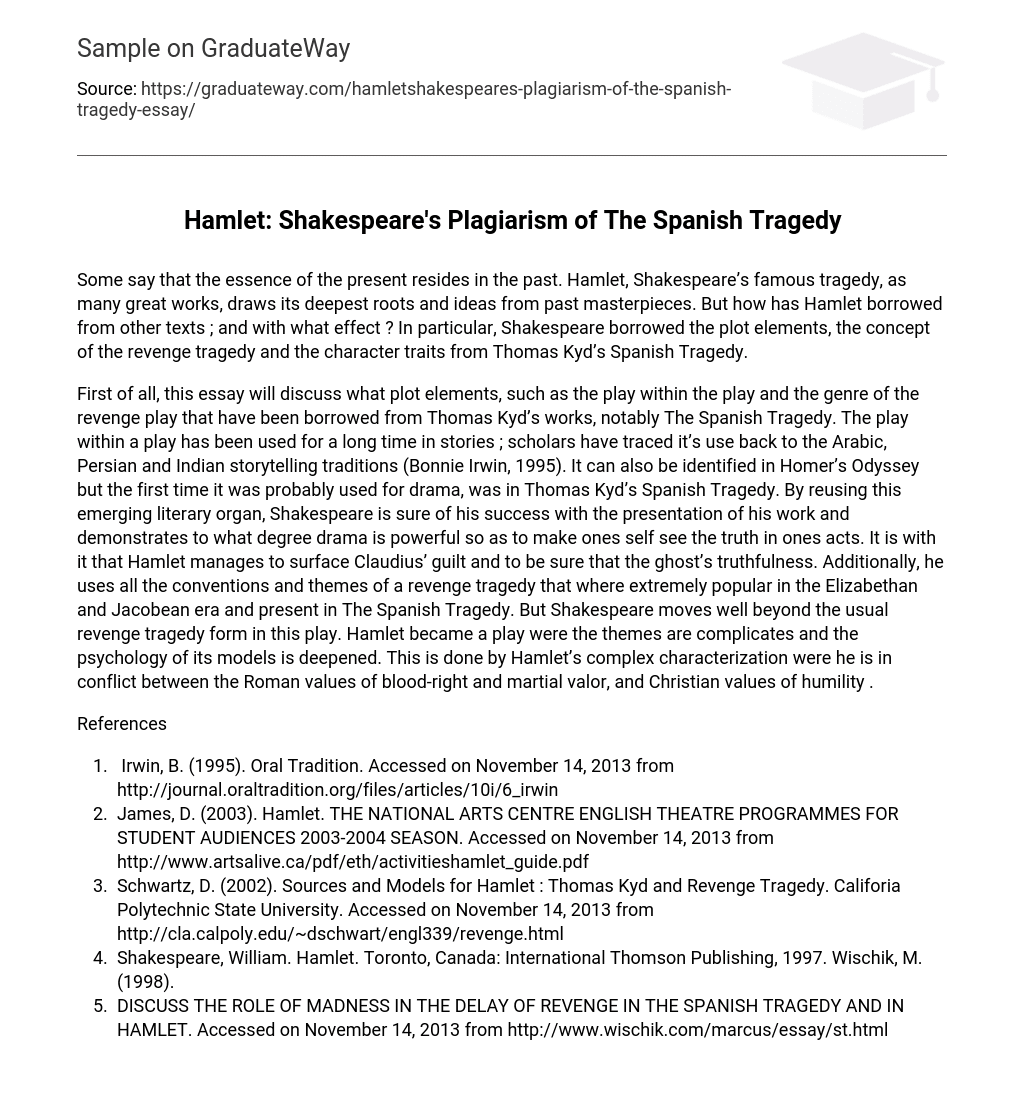Some argue that the present is grounded in the past. Like many other renowned works, Hamlet, Shakespeare’s famous tragedy, has drawn inspiration from previous masterpieces. However, how did Hamlet incorporate elements from other texts and what was its impact? Specifically, Shakespeare borrowed plot elements, the concept of a revenge tragedy, and character traits from Thomas Kyd’s Spanish Tragedy.
Firstly, this essay will discuss the plot elements that have been borrowed from Thomas Kyd’s works, particularly The Spanish Tragedy. These elements include the play within the play and the genre of the revenge play. The play within a play has a long history in storytelling, with traces found in Arabic, Persian, and Indian traditions (Bonnie Irwin, 1995). It can also be seen in Homer’s Odyssey, but Thomas Kyd’s Spanish Tragedy is likely the first instance of its use in drama. Shakespeare utilizes this literary device to ensure the success of his work and emphasize the power of drama in revealing the truth about one’s actions. In Hamlet, the play within a play assists in exposing Claudius’ guilt and validating the ghost’s honesty. Furthermore, Shakespeare incorporates the conventions and themes of a revenge tragedy, which were immensely popular during the Elizabethan and Jacobean era and prevalent in The Spanish Tragedy. However, Shakespeare goes beyond the typical revenge tragedy form in this play. Hamlet explores complex themes and delves deeper into the psychology of its characters. This is achieved through Hamlet’s intricate characterization, as he navigates between Roman ideals of lineage and bravery and Christian values of modesty.
References
- Irwin, B. (1995). Oral Tradition. Accessed on November 14, 2013 from http://journal.oraltradition.org/files/articles/10i/6_irwin
- James, D. (2003). Hamlet. THE NATIONAL ARTS CENTRE ENGLISH THEATRE PROGRAMMES FOR STUDENT AUDIENCES 2003-2004 SEASON. Accessed on November 14, 2013 from http://www.artsalive.ca/pdf/eth/activitieshamlet_guide.pdf
- Schwartz, D. (2002). Sources and Models for Hamlet : Thomas Kyd and Revenge Tragedy. Califoria Polytechnic State University. Accessed on November 14, 2013 from http://cla.calpoly.edu/~dschwart/engl339/revenge.html
- Shakespeare, William. Hamlet. Toronto, Canada: International Thomson Publishing, 1997. Wischik, M. (1998).
- DISCUSS THE ROLE OF MADNESS IN THE DELAY OF REVENGE IN THE SPANISH TRAGEDY AND IN HAMLET. Accessed on November 14, 2013 from http://www.wischik.com/marcus/essay/st.html





